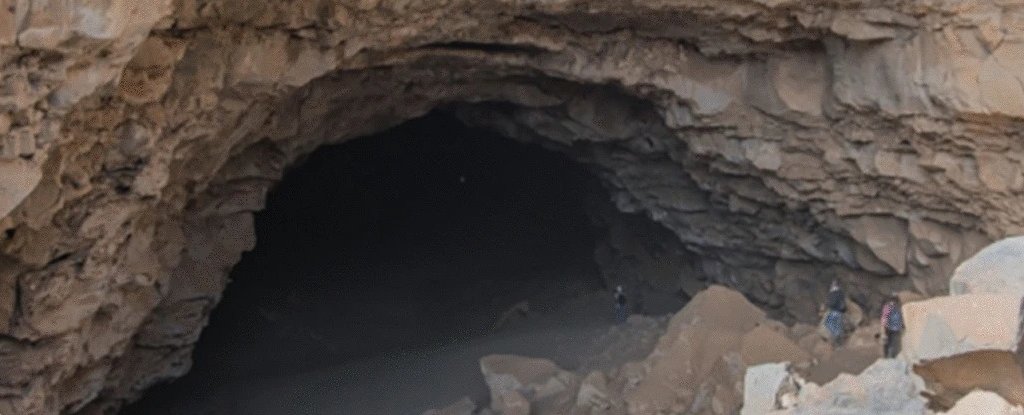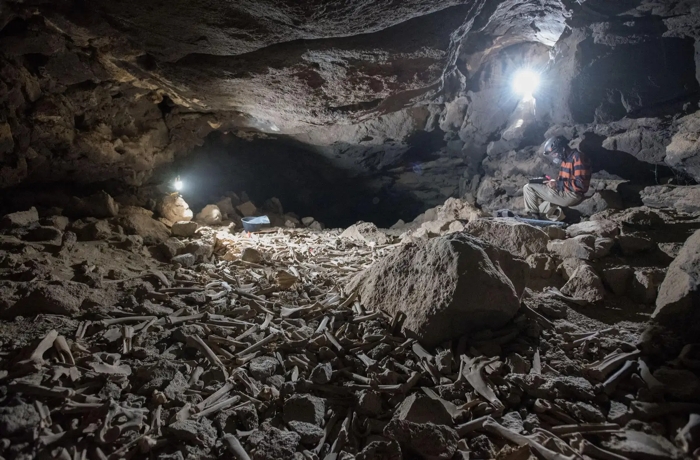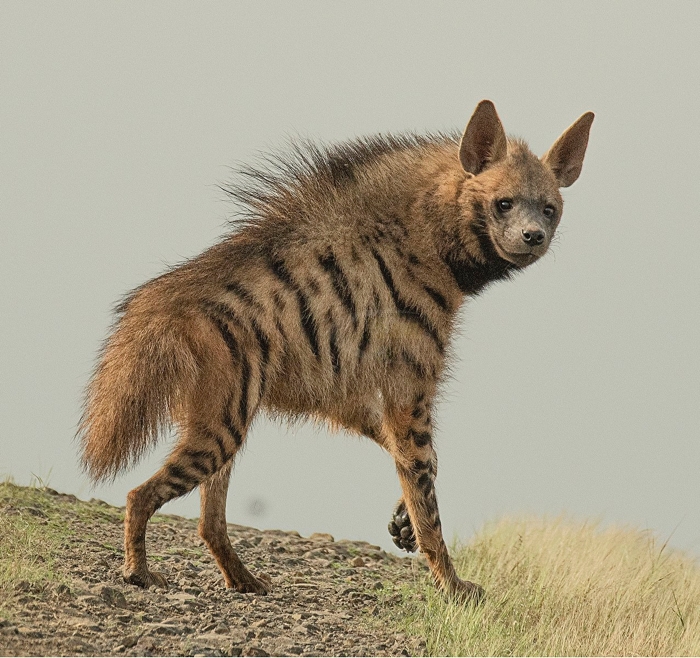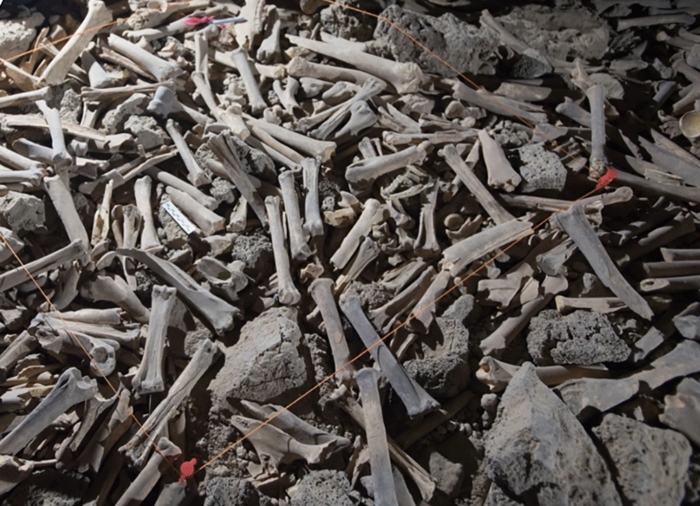
Posted on 08/16/2021 11:09:34 AM PDT by Red Badger

A huge horde of mixed animal bones, including the remains of humans, has been found in an ancient lava tube in Saudi Arabia.
The hollowed cave, called Umm Jirsan, is a sprawling lava conduit system underneath the volcanic fields of Harrat Khaybar in the northwest of the country.
Umm Jirsan extends for a staggering 1.5 kilometers (almost a mile), making it the longest known reported lava tube in Arabia. Within those extensive shadows, wild creatures have been busy.
In a new study, researchers report the discovery of hundreds of thousands of bones belonging to at least 14 different kinds of animals, such as cattle, horses, camels, rodents, and more. And some of those bones are human.

"This 1.5 km long lava tube is chock-a-block with hundreds of thousands of beautifully preserved animal remains," zooarchaeologist Mathew Stewart from the Max Planck Institute for Chemical Ecology in Germany posted on Twitter.
"But why?"
According to the researchers, this massive horde of bones was most likely scavenged together by striped hyena (Hyaena hyaena), whose own skeletal remains were also found in the cave, along with their fossilized droppings (called coprolites).
"These critters are avid collectors of bones, which they transport to dens to be consumed, fed to young, or cached," Stewart explains, noting that the epic assemblage represents a collection for the ages.
"The material at Umm Jirsan has accumulated over the last 7,000 years, attesting to the excellent conditions for preservation of bone within the lava tube."

Striped hyena. (Rushikesh Deshmukh DOP/Wikimedia Commons/CC BY-SA 4.0)
While animal bones have been unearthed in the Umm Jirsan lava tube before this, there's yet much we don't yet understand about the taxonomy of species in the cave, nor what those remains could tell us about paleoecology in the region.
This old hyena den, however, is not just a relic of the ancient past. During a previous investigation of the lava tube in 2007, researchers heard sounds of "growling" in the cave, suggesting Umm Jirsan remains open for business.
It's possible other kinds of animals might have assembled the giant bone collection, such as foxes or wolves. But the team says the weight of evidence points to hyenas: wolves don't usually disperse bones far from kill sites, and foxes can't carry or easily consume such large prey.
Moreover, many of the markings on the bones suggest hyena gnawing and digestive processes.

Bones scattered in Umm Jirsan. (Stewart et al., AAS, 2021)
"Taken together, the large size of the assemblage, the overabundance and intensive processing of ungulate limb bones, abundant hyena coprolites, and presence of juvenile hyena and human cranial remains suggest that Umm Jirsan served primarily as a striped hyena den, and, on occasion, as a maternal den," the researchers write in their study.
While there's much we still don't know about Umm Jirsan, the researchers are hopeful this grisly tomb can serve as a time capsule to shed light on the paleoecology and prehistory of ancient Arabia.
"In a region where bone preservation is very very poor, sites like Umm Jirsan offer an exciting new resource," Stewart says.
"This study is just the tip of the iceberg."
The findings are reported in Archaeological and Anthropological Sciences.
LOL
Probably a KONG buried in there, somewhere.
What are the odds some loony lib drew that?
Possible, since none of my dogs ever wanted to play with them and theirs are buried somewhere in the house.
;D
About 100%.
Worst part of being eaten by hyenas is are they laughing at you or with you?
I did not know that.
I guess it is the line breeding that makes the ones I have known so vile. The Hyena’s I mean.
Working from memory - too lazy to research - didn’t Velikovsky write about so-called “bone caves” as evidence of catastrophe? Or perhaps as evidence of the Great Flood?
This topic was posted , thanks Red Badger.
Ironically, the reason I missed your ping two weeks ago is, I was at a buffet.
Me too, not!
‘Face
;o]
https://synthaissance.blogspot.com/2017/05/immanuel-velikovsky-1895-and-1950-time.html
Hippopotami, animals that live in the marshes of Africa, left their bones in abundance in England and France, and these bones are not yet fossilized. J. Prestwich, professor of geology at Oxford (1874-1888), was early struck by the finds in the fissures of the rocks in England, central and southern France, Gibralter and the islands of the Mediterranean. (9) Bones of animals, living and extinct, in great masses choke these fissures and caves. Some fissures are on top of high hills, and they, too, are filled with bones. The bones are broken into innumerable fragments and are still fresh; artifacts of man are found among them. Prestwich understood that some catastrophe of continental dimensions, with water playing the main role, swept over Europe in the time when the Neolithic Age started there and when the Bronze Age may have been well on its way in the centers of ancient civilization.
Velikovsky wrote about great thick deposits of bones, especially in Canada, and I think he mostly considered them flood remains. Years ago I read a book, the title I think was “My Way was North.” where masses of bone eroding out of a cliff face were described. Craftspeople gather some of the horns, or teeth, or ivory to make beautiful artifacts. Probably the bolide crashes in North America about 13K years ago described by Firestone et al, could be one major cause.
Disclaimer: Opinions posted on Free Republic are those of the individual posters and do not necessarily represent the opinion of Free Republic or its management. All materials posted herein are protected by copyright law and the exemption for fair use of copyrighted works.